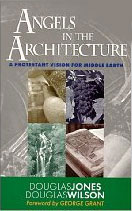How an Oscar Winning Film Provides an Unforgettable Picture of Sin
“The Diet” | Column by Richard Wagner | www.digitalwalk.net
Sin is crouching at your door. It desires to have you, but you must master it. —Genesis 4:7
…If you’ve ever fought a bout of food poisoning, you know that there’s not much worse until your body has gotten the poison out of its system. Tainted food may look enticing, but once inside, it begins to invade, inhabit, and revolt against you. Sin enters your life much in the same way. It comes wrapped inside of an appealing package, but what lurks underneath is an enemy that aims to overpower every aspect of your life. And while most cases of food poisoning go away on their own in a day, sin never gives up – that is, unless you actively do something to get rid of it.
The nasty effects of sin and temptation can leave you searching for answers. In a most unexpected way, the Oscar-winning A Beautiful Mind offers a vivid picture for how to deal with sin in your life, reinforcing what the Bible teaches about the poisonous stuff.
A Beautiful Mind tells the true life story of John Nash, a math genius who could solve problems that baffled even the greatest thinkers of his day. While in graduate school at Princeton, he makes an amazing discovery that propels him to much fame in the late 1940s. However, behind the scenes, Nash is a desperate man, plagued by schizophrenia that leaves him unable to separate fantasy from reality. Unknown to him consciously, his troubled mind produces imaginary people that become an intimate part of his life. It is only through the selfless love shown by his wife, Alicia, that Nash is eventually able to overcome his battles and, late in life, receive the Nobel Prize.
While A Beautiful Mind is gripping and inspiring drama, the film, quite unintentionally, offers something more for Christians. Watch the film with an eye on his delusions and think of them as representing sin and temptation. If you do so, the story of John Nash paints an unforgettable picture of sin’s damaging effects and the way to successfully conquer temptation in your Christian walk.
Ground Zero
The Bible is says flat out that Satan is going to lose in the end. But, until the day that you can exclaim “hasta la vista”, the master tempter is going to identify and target your weak spots. In particular, he’s going to locate an area of your life in which you have an unmet desire and then offer a cheap imitation as a substitute to fill that hole.
A Beautiful Mind illustrates how this kind of bait-and-switch routine is pulled off inside of a person’s mind. In spite of his arrogance and brilliance, Nash is needy. Very needy. His schizophrenic mind dreams up three make-believe people to fill in these missing pieces of his life.
Continue reading




























